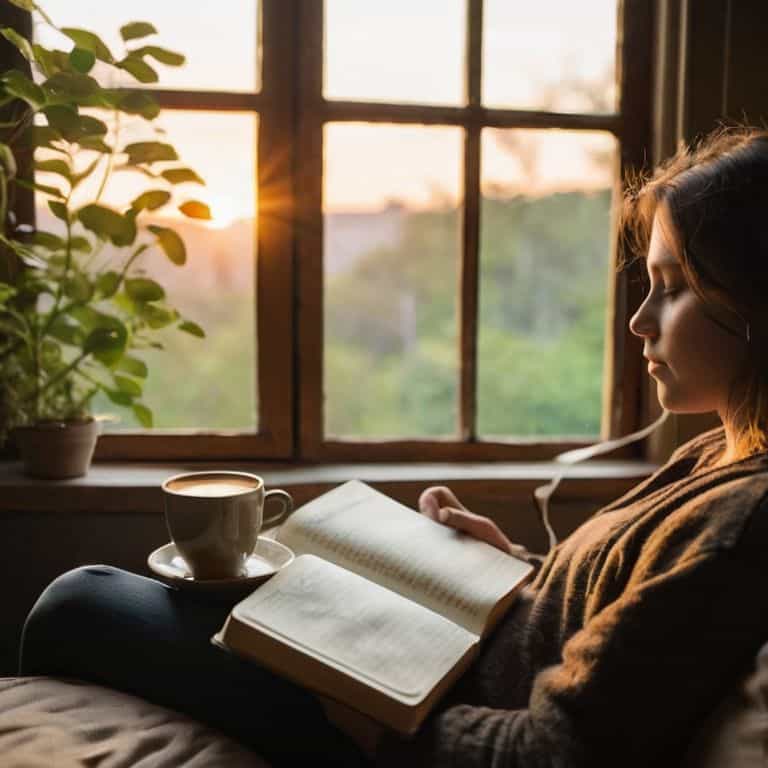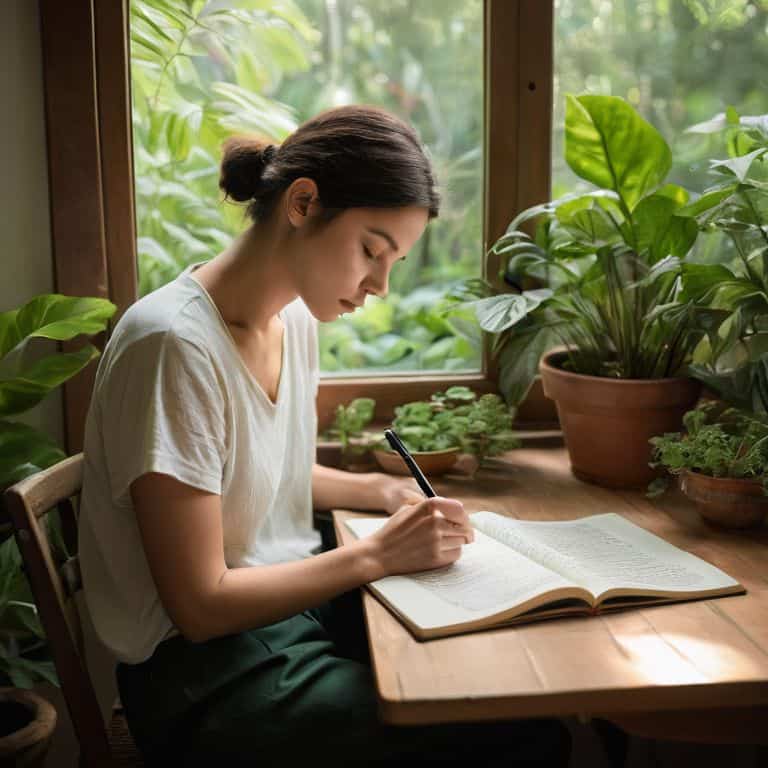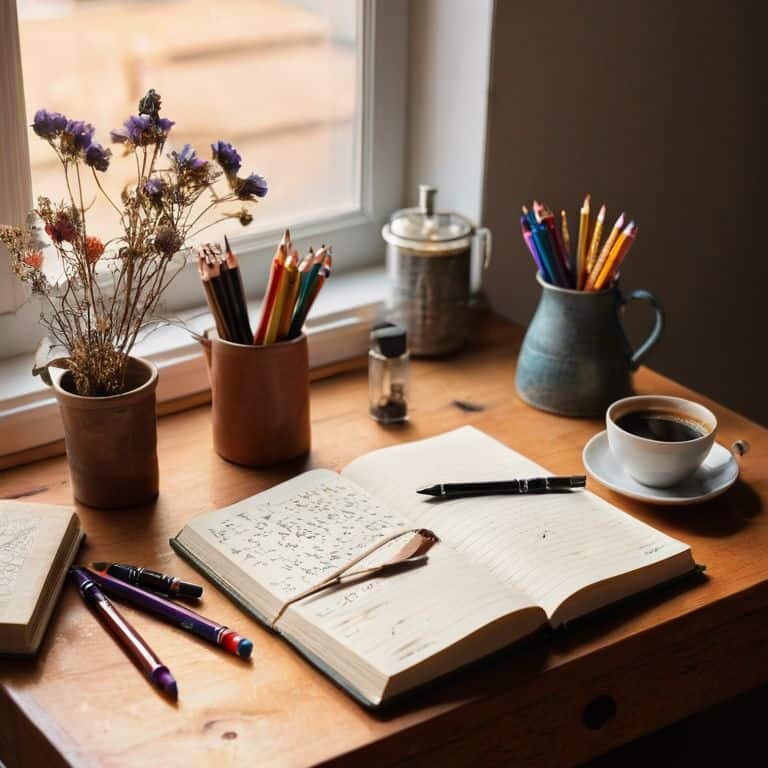I still remember the first time I stumbled upon the concept of different types of journaling. I was overwhelmed by the numerous options and techniques, each claiming to be the ultimate solution for a clearer mind and a more organized life. As a librarian, I’ve seen many people struggle to find the right fit, often getting discouraged by the hype surrounding certain methods. I believe that journaling should be a personal and enjoyable experience, not a source of stress or anxiety.
In this article, I promise to cut through the noise and provide you with honest, experience-based advice on exploring the various types of journaling. I’ll share my own story of discovery, highlighting the methods that have worked for me and the ones that haven’t. My goal is to empower you with the knowledge to find the perfect journaling style for your needs, whether you’re looking to reduce stress, increase productivity, or simply cultivate a greater sense of self-awareness. By the end of this journey, you’ll be equipped with the tools to make journaling a sustainable and rewarding habit, one that brings you joy and clarity in your daily life.
Table of Contents
- Discovering Calm
- Unleashing Creativity Art Journal Ideas for Mindfulness
- Your First Step to Calm Morning Pages Journaling
- Exploring Different Types of Journaling
- Finding Peace Journal Prompts for Anxiety and Digital Journaling Apps
- Travel Journal Tips for Mindful Adventures and Journaling for Mental Health
- Nurturing Your Mind: 5 Essential Tips for Exploring Different Types of Journaling
- Key Takeaways for a More Mindful You
- Embracing the Journey of Self-Discovery
- Embracing the Journey of Journaling
- Frequently Asked Questions
Discovering Calm

As we explore the world of journaling, it’s essential to understand how morning pages journaling can set a positive tone for the day. By dedicating a few minutes each morning to writing down your thoughts, you can clear your mind and focus on what’s truly important. This practice helps to reduce stress and anxiety, allowing you to approach the day with a sense of calm and clarity. I’ve found that starting my day with journaling helps me prioritize my tasks and tackle challenges with a fresh perspective.
To make journaling a sustainable habit, it’s crucial to find a style that resonates with you. Art journal ideas can be a great way to express yourself creatively, combining words with images and colors to reflect your mood and emotions. By experimenting with different techniques and prompts, you can discover what works best for you and make journaling a enjoyable and therapeutic experience. Whether you prefer writing, drawing, or a combination of both, the key is to make the process your own and have fun with it.
As you continue on your journaling journey, you may encounter days when words won’t come easily. That’s where journal prompts for anxiety can be incredibly helpful. These gentle reminders can guide you through challenging times, providing a safe space to process your emotions and gain valuable insights. By leveraging these tools and techniques, you can unlock the full potential of journaling and cultivate a deeper sense of calm and well-being in your life.
Unleashing Creativity Art Journal Ideas for Mindfulness
As we explore the world of journaling, it’s essential to remember that creativity knows no bounds. Art journaling is a beautiful way to express yourself, and with a few simple prompts, you can unlock a world of self-expression. By combining colors, textures, and words, you can create a unique reflection of your thoughts and emotions.
To get started with art journaling, try incorporating mixed media elements into your pages. This can include anything from paint and markers to collage materials and photographs. Remember, the goal is to have fun and let your imagination run wild, allowing you to tap into your creative potential and cultivate mindfulness.
Your First Step to Calm Morning Pages Journaling
To start your journaling journey, let’s explore Morning Pages Journaling, a technique developed by Julia Cameron. This involves writing down your thoughts and feelings first thing in the morning, without editing or censoring yourself, to help clear your mind and set intentions for the day. By doing so, you’ll be able to tap into your inner world and gain clarity on your priorities.
As you begin Morning Pages Journaling, remember to keep your writing free-flowing, allowing your thoughts to unfold naturally on paper. Don’t worry about grammar, spelling, or coherence – the goal is to release your thoughts and emotions, making space for a more focused and calm you.
Exploring Different Types of Journaling

As we delve into the world of journaling, it’s essential to explore the various methods that can help you achieve mental clarity and reduce stress. One approach that has gained popularity is morning pages journaling, which involves writing down your thoughts and feelings first thing in the morning. This technique can be a great way to clear your mind and set intentions for the day. Additionally, art journal ideas can be a wonderful way to express yourself creatively and tap into your subconscious mind.
When it comes to managing anxiety, journal prompts can be a valuable tool. These prompts can help guide your writing and provide a sense of direction when you’re feeling overwhelmed. By using journal prompts for anxiety, you can begin to process your emotions and gain a deeper understanding of yourself. Furthermore, travel journal tips can be a great way to document your adventures and reflect on your experiences.
Whether you prefer traditional paper journals or digital journaling apps, the most important thing is to find a method that works for you. By incorporating journaling into your daily routine, you can start to experience the many journaling for mental health benefits, from reduced stress to increased self-awareness. Remember, the key is to be consistent and make journaling a habit that brings you joy and fulfillment.
Finding Peace Journal Prompts for Anxiety and Digital Journaling Apps
As we delve into the world of journaling for anxiety, it’s essential to find the right tools to guide us. Digital journaling apps have become increasingly popular, offering a convenient and accessible way to practice mindfulness. With a wide range of options available, you can choose the one that suits your needs and preferences.
To get started, try using journal prompts that focus on calming your mind and reducing anxiety. These prompts can help you process your emotions, gain perspective, and develop a more positive mindset. By incorporating journal prompts into your daily routine, you can take the first step towards finding peace and calm in a busy world.
Travel Journal Tips for Mindful Adventures and Journaling for Mental Health
As I reflect on my own travels, I’ve found that mindful journaling can be a powerful tool for capturing memories and reflections. By taking a few moments each day to record your thoughts, feelings, and observations, you can deepen your connection to the places you visit and the people you meet.
To make the most of your travel journal, try incorporating sensory details into your entries, such as the sounds, smells, and textures of the environments you encounter. This can help you relive your experiences and appreciate the beauty of the world around you, even after your trip has ended.
Nurturing Your Mind: 5 Essential Tips for Exploring Different Types of Journaling
- Start small: Begin with a simple journaling practice, like morning pages, to establish a daily habit and discover what works best for you
- Experiment with formats: From art journals to digital apps, try out various types to find the one that resonates with your personality and needs
- Make it a ritual: Incorporate journaling into your daily routine, such as right after waking up or before bed, to create a sense of calm and consistency
- Be patient and kind: Remember that journaling is a personal journey, and it’s okay to miss days or try new things – the goal is to enjoy the process and learn from it
- Explore prompts and inspiration: Look for online resources, books, or workshops that offer journaling prompts and ideas to help you stay motivated and inspired to continue your journaling practice
Key Takeaways for a More Mindful You
By exploring different types of journaling, such as morning pages, art journaling, and travel journaling, you can discover the perfect fit to enhance your mental health and wellness journey
Utilizing journal prompts and digital journaling apps can provide an accessible and convenient way to incorporate mindfulness into your daily routine, helping to alleviate anxiety and stress
Whether through creative expression, reflection, or planning, journaling offers a versatile tool for cultivating calm, clarity, and self-awareness, empowering you to take control of your life and nurture your well-being
Embracing the Journey of Self-Discovery
As we explore the diverse world of journaling, remember that each type is a thread in the tapestry of our stories, weaving together moments of reflection, creativity, and growth to create a masterpiece of self-discovery.
Hannah Jensen
Embracing the Journey of Journaling

As we’ve explored the various types of journaling, from morning pages to art journaling, and from digital journaling apps to travel journals, it’s clear that finding the right fit is key to making journaling a sustainable and enjoyable practice. By understanding the different types of journaling and their unique benefits, you can tailor your approach to suit your needs, whether that’s reducing anxiety, cultivating creativity, or simply finding a sense of calm in a busy world. Remember, journaling is a personal and flexible tool, and the most important thing is to find a method that resonates with you.
As you close this guide and embark on your own journaling journey, I want to leave you with a final thought: journaling is a journey, not a destination. It’s a process of discovery, growth, and self-care, and it’s okay to take your time, experiment with different styles, and make mistakes along the way. By embracing the journey of journaling, you’ll not only find a valuable tool for navigating life’s challenges, but also a deepening sense of connection to yourself and the world around you.
Frequently Asked Questions
What are the best types of journaling for beginners to start with?
For beginners, I recommend starting with morning pages or gratitude journaling – they’re simple, yet powerful. You can also try prompts-based journaling to get your thoughts flowing. These types are great for easing into the habit and discovering what works best for you.
How can I incorporate different types of journaling into my daily routine without feeling overwhelmed?
Let’s simplify this – start by choosing one type of journaling that resonates with you, then commit to just 5-10 minutes a day. As you get comfortable, you can explore other styles and gradually add them to your routine, creating a peaceful and personalized practice that works for you.
Are there any specific journaling techniques that can help with stress relief and improving mental clarity?
For stress relief and mental clarity, I recommend trying “Brain Dump” journaling, where you write down all your thoughts without stopping, or “Mind Mapping,” which visually connects your ideas. These techniques can help calm your mind and clarify your thoughts, making them perfect for busy lives.
